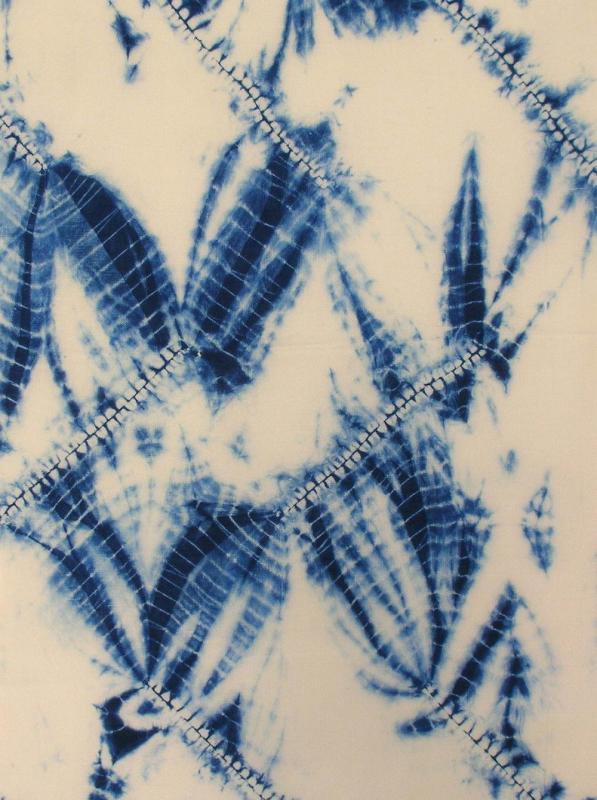TWO shibori oshime CLOTHs, Japan, early Showa (circa 1930), cm 133x34 each. Japan's blue-and-white cotton textiles are regularly associated with its traditional rural culture, and those obtained via the so-called ‘shibori’ technique do reach the pinnacles of this “country textiles” class. Shibori is a general term which encompasses a wide range of shape-resist dyeing techniques including tie-and-dye, binding, stitching, pleating and clamping, etc. and it describes the inherent patterning process of manipulating the two-dimensional cloth surface into three-dimensional shapes before compressing them to dye, thus creating surface patterns, some extremely intricate and innovative. These two indigo shibori ‘oshime’ hand-woven cottons are an excellent example of this, with their folded and stitched ‘orinui’ and ‘makiage’ thread-wrappings, a rather uncommon feature than the usual clamp-dyed patterns seen on contemporary shibori cloths. Possibly obtained by deconstructing a summer kimono (yukata), they show a good condition and a nice rendition of bamboo plant and leaves. Lovely and ethereal objects. An unusual addition to any collection of Japanese indigo cottons, or a good starting point for such a task.
- Home
- Antique Rugs by Region
- Category
- Profiles
- Post Items Free
- Albums
- Benaki Museum of Islamic Art
- Budapest: Ottoman Carpets
- Gulbenkian Museum
- Islamic Carpets. Brooklyn
- Islamic Textiles. Brooklyn
- Konya Museum: Rugs
- MKG, Hamburg
- MMA: Caucasian Carpets
- MMA: Mamluk Carpets
- MMA: Mughal Indian Carpets
- MMA: Ottoman Carpets
- MMA: Safavid Persian Carpets
- MMA: Turkmen Rugs
- McCoy Jones Kilims
- Ottoman textiles. Met
- Philadelphia Museum
- Rugs and Carpets: Berlin
- Seljuqs at the Met
- TIEM, Istanbul: Carpets
- V&A: Classical Carpets
- Vakiflar Carpets: Istanbul
- Baluch Rugs: Indianapolis
- Gallery Exhibitions
- Jaf an Exhibition
- Alberto Levi Gallery
- Andean Textile
- Christie's London: 2016
- Francesca Galloway
- HALI at 40
- ICOC Washington, DC 2018
- Jajims of the Shahsavan
- London Islamic Week April, 2018
- Mongolian Felts
- Navajo Rugs: JB Moore
- Persian Piled Weavings
- SF Tribal & Textile Art Show 2020
- SF Tribal 2019
- Sotheby's: C. Alexander
- Turkish Prayer Rugs
- Turkmen Main Carpets ICOC 2007








